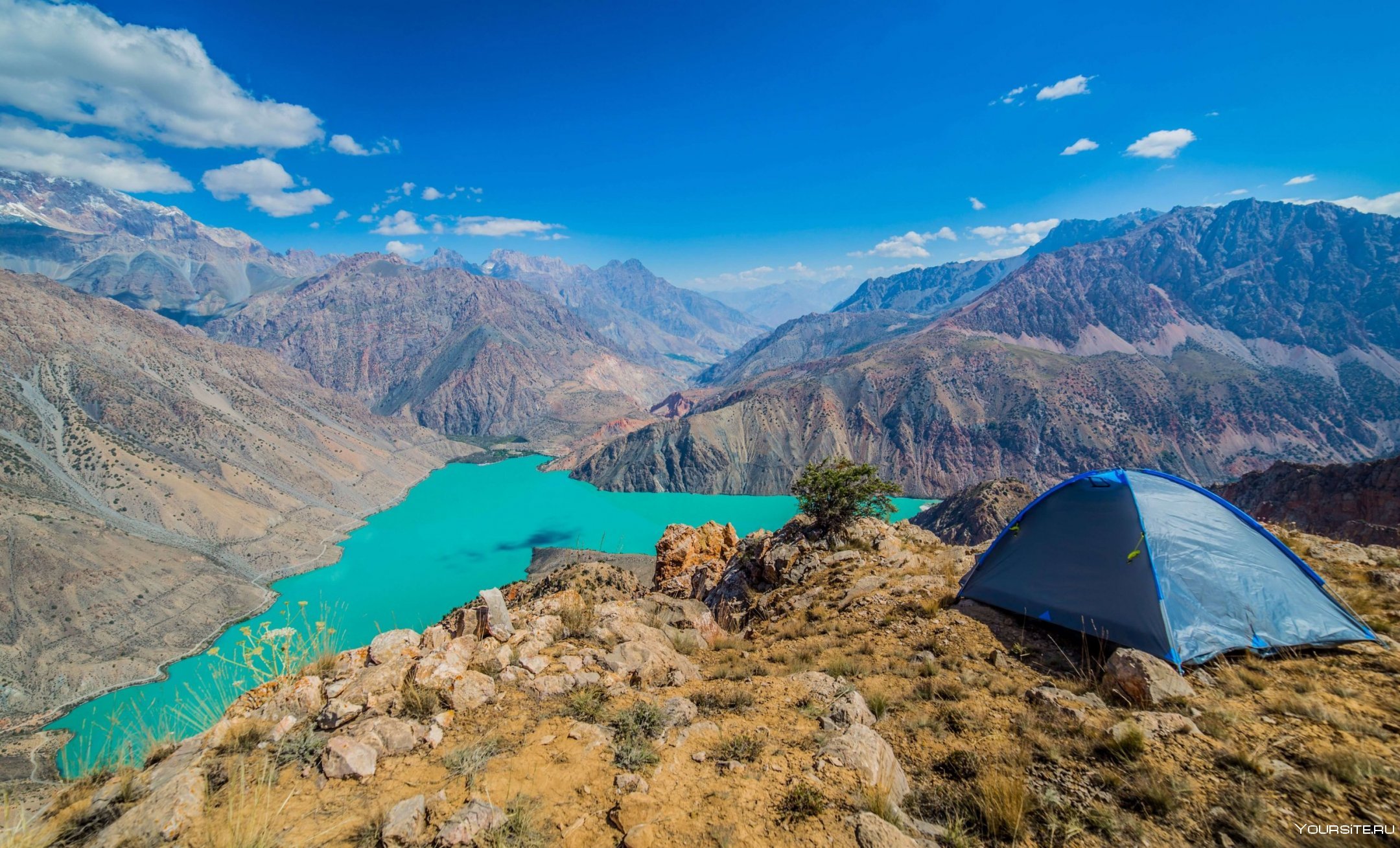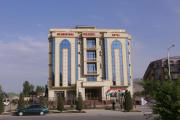Sogdiana was an ancient Persian civilization situated between the Amu-Darya and the Syr-Darya rivers. The modern territories of Samarkand, Bukhara, and the Sughd region of Tajikistan correspond to the historical Sogdian territory. During the High Middle Ages, Sogdian cities included sites extending towards Issyk Kul, such as the archaeological site of Suyab.
Sogdiana was also a province of the Achaemenid Empire (546-327 BC), as evidenced by its listing on the Behistun Inscription of Darius the Great. Sogdiana was initially conquered by Cyrus the Great, the founder of the Achaemenid Empire, and subsequently annexed by the Macedonian ruler Alexander the Great in 328 BC.
Sogdians also inhabited Imperial China, where they achieved prominence in the military and government of the Chinese Tang dynasty (618–907 AD). Sogdian merchants and diplomats traveled as far west as the Byzantine Empire. They played a pivotal role as middlemen in the trade route of the Silk Road.
The Sogdian city-states, despite lacking a unified political structure, were centered on the city of Samarkand. The Sogdian language, an Eastern Persian (Iranian) language, is no longer spoken. However, a descendant of one of its dialects, Yaghnobi, is still spoken by the Yaghnobis of Tajikistan.
ITINERARY: Dushanbe – Yaghnob Valley – Iskanderkul Lake – Panjakent – Ancient Sarazm – Seven Lakes – Rudaki complex
DUSHANBE – YAGHNOB VALLEY – ISKANDERKUL LAKE
09:00 – Welcome, tourists, and farewell to Yaghnob Valley.
Get ready for an incredible journey through the Varzob Valley! We'll be exploring this breathtaking region for approximately two and a half hours, following the course of the Varzob River. And now for something really special! We're going to turn our attention to the incredible Yaghnob Valley.
12:30 – We arrived at the Yaghnob Valley.
YAGHNOB VALLEY
The incredible Yagnob Valley, situated just 105 km north of Tajikistan’s capital, Dushanbe, spans approximately 60 km in length. The magnificent valley is formed by the Kumbil and Barzenga Rivers, which originate from the Takali mountain junction glaciers. The Yaghnob River flows in a beautiful parallel course with the Zarafshon River, delineating the boundary between the magnificent Zarafshon and Hissar mountain ranges. The upper part of the valley is absolutely renowned for its incredible alpine and sub-alpine meadows! It is worth noting, however, that this area is uninhabited, which allows it to retain its natural beauty. The area is only utilized by shepherds during the summer months for grazing cattle, which is a truly unique and special experience.
The area along the river is absolutely breathtaking! It's a relatively wide and open valley at an altitude of 2–3,000 m, and it's home to some of the most charming Yaghnobi villages you'll ever see. The Yaghnobi are a fascinating group of Tajiks, direct descendants of the Sughdi (Sogdians). Their language is one of the lesser-studied dialects of the ancient Sughdi (Sogdian) language, which was used by the ancestors of the present-day Tajiks until the Arab conquest of Central Asia in the 7th-8th centuries
13:00 – Lunch
14:30 – Departure to Iskanderkul Lake
16:30 – Arrival at Iskandarkul Lake
ISKANDERKUL - a truly magnificent lake located in the northern part of the country, in the Sugd region. The capital of Tajikistan is just over 180 kilometers away, and the highway there is absolutely incredible! Along the way, you'll be treated to some truly breathtaking scenery, with snow-capped mountain peaks plunging into the deep blue of the sky. This small piece of untouched land has so much to offer, including the incredible Lake Iskanderkul! The area is home to some truly magnificent sights, from stunning blue lakes to fast-flowing mountain rivers and picture-perfect forests. Lake Iskanderkul is a true gem, nestled in the mountains like a sparkling pearl. It's a living legend!
17:00 - visit Panjchashma and Busefal canyon
BUCEPHALUS CAVE - another legend has it that the magnificent Macedonian horse, Bucephalus, drank water from the lake during a stop after a long, arduous journey. Unfortunately, he fell ill as a result. The commander himself went even further to India, leaving his faithful horse behind. But even from such a great distance, he felt his master's death and leapt into the lake, where he remains to this day! Since then, something truly magical has happened! During the full moon, every month, Bucephalus comes out of the water to graze. The waters part, and a magnificent snow-white horse emerges from the lake, accompanied by grooms..
Panjchashma is an incredible place called "Five Springs" for a truly unique natural phenomenon. Here, pure spring water flows from five highlands into Lake Iskandarkul, creating a breathtaking sight that will captivate your imagination
18:00 – hike to the Lake Moron and Iskandarkul Waterfall
SNAKE LAKE. Just a short distance from Iskanderkul is another incredible lake called Snake Lake. The stories of the old-timers are fascinating! They say that many snakes live in it. The locals have a fascinating belief about the snakes in their lake. They say that the reptiles will never bite unless they're in the water or if people drink the water. The water is warmer than in Iskanderkul, so you can even swim here!
FANN NIAGARA WATERFALL. Just a stone's throw from Lake Iskanderkul, you'll find an incredible old juniper tree (or juniper bush, if you prefer). Its branches are adorned with vibrant, colourful ribbons, creating a truly unique and awe-inspiring sight! Everyone who comes to admire the incredible local waterfall leaves something of their own on this tree, so they'll definitely want to come back again in the future! Just a stone's throw away is the incredible 43-meter waterfall, aptly named "Fan Niagara." And it's located on the river that flows out of the lake! And there's more! There's a rock with an inscription dating back to 1870, left by the participants of the expedition led by the famous Russian traveler and scientist A. Fedchenko.
19:00 – Departure to Sarytag village
19:30 – Dinner and accommodation to the hotel
Iskanderkul – Dardar Vilage – Panjakent, ancient Sarazm
07:00 – Time for breakfast! Then, we're off to Panjakent via Iskandarkul.
09:00 – Arrival Dardar Village
Dardar is a vibrant settlement in the Ainy district of the Sughd region of Tajikistan. It's situated on the southern slope of the Turkestan ridge, right along the beautiful Zeravshan River. The village is even crossed by a river! The Dardar is a beautiful tributary of the Zeravshan River. The magnificent ceiling of the ancient portico of the mosque in the center of the village is truly a sight to behold! It is the bustling administrative center of the Dar Dar rural community, which includes the villages of Iskodar, Zerabad, Qum, Khayrabad, and Novdonak. Amazingly, there is a highway running right through the center of the village! It's the Dushanbe-Samarkand highway
11:00 – Continue trip
12:00 – Arriving Panjakent, the same time visit Panjrud vilage
The incredible city of Penjikent is nestled in the breathtaking valley of the Zarafshan River, just east of the city of Samarkand. Perched at an impressive altitude of 900 meters above sea level, this ancient city is a true gem! The city is absolutely teeming with incredible sights, architectural gems, and a stunning recreation area right on the banks of the Zarafshan River
12:30 – Lunch
13:30 – Visit Panjakent Bazar, time for shopping
14:30 – Visit ancient Sarazm city
SARAZM
The incredible Sarazm is the first World Heritage Monument in Tajikistan! This incredible site is the oldest settlement in the area, dating back to the IV—II millennium BC! It's located just 15 km west of the district center of Penjikent, on the left bank of the magnificent Zeravshan River. The well-preserved palace and religious buildings, along with the public and residential buildings, are of immense historical and cultural value.
17:00 – Accommodation to hotel
19:00 – Dinner, national kitchen
Panjakent – Seven Lakes – Artuch – Dushanbe
07:00 – Breakfast and off to Seven Lakes!
09:00 – Our incredible hike (or with transport) tour will start from the stunning Lake Mijgon. Here we have 30 minutes to relax on the beach of the lake.
09:30 – Continue our unforgettable hike to the breathtaking Lake Soya, with a duration of 1.8 km.
MIJGON (62 km from Penjikent)
The first lake that travelers see is the incredible Mijgon, located at an altitude of 1640 meters above sea level. And it has a fascinating name, derived from the Tajik word "eyelashes." Lake Mijgon is an impressive 20 meters deep and covers an area of 0.05 square kilometers! One of the most striking features of Lake Mijgon is its ever-changing colors. Depending on the lighting and the season, the water can be a vibrant turquoise, a deep blue, or even a rich purple. This is all thanks to the high content of minerals (sodium and calcium) in the water! In the summer, the water is delightfully warm, and visitors can delight in a refreshing dip in this fascinating lake.
SOYA (1,8 km from Mijgon)
Next, you'll embark on an exhilarating journey from Lake Mijgon along a winding, steep path. As you venture forth, you'll encounter a natural dam that separates Lake Mijgon from the second lake, Soya. This is where the real magic begins! From this vantage point, you'll be treated to a breathtaking view of Mijgon. Get ready to be amazed! Soya Lake is named after the Tajik word "shadow," and it's easy to see why! This lake is located between high rocks, so it is in the shade almost all day. As in Mijgon, the water in Soya Lake changes color depending on the weather and time of day, which makes it even more magical! The lake is located at an altitude of 1701 meters and has an area of 0.1 square kilometers.
HUSHOR (2,8/1,0 km from Soya)
The third lake, Khushor, is just 400 meters from Soy, and when you get close to it, you'll be amazed to see a turbulent stream connecting them! The incredible Lake Khushor is located at an impressive altitude of 1771 meters and covers an area of 0.23 square kilometers. The lake is surrounded by steep cliffs and was once home to venomous snakes, which is how the lake got its name!
In Soviet times, the incredible Marguzor Lakes camping site was located right next to this lake! However, a fascinating turn of events led to the camp being destroyed by a mudflow from the mountains, leaving only traces of its foundation. Despite the potential dangers, the lake is actually quite calm. On sunny days, you can even see schools of fish swimming happily in the clear water!
The Seven Lakes tour is coming to an end, but we've had a wonderful time! We would have loved to visit the other three lakes, but sadly we don't have enough time.
11:00 – Trip to Artuch Village
12:30 – Lunch on the way
14:00 – Arrival Panjrud
The incredible RUDAKI COMPLEX is situated in the heart of the village of Panjrud, just a short 60 km journey east of the city of Penjikent. It is undoubtedly one of the most famous and awe-inspiring sights in the entire country of Tajikistan! The incredible mausoleum was built for the legendary founder of Persian-Tajik literature, Abuabdulloh Rudaki. He lived in the late 9th and 10th centuries, during the reign of the Samanid dynasty. You can even visit the complex at the request of tourists!
15:00 – Visit Artuch alp Camp
16:00 – Way back to Dushanbe
20:00 – Arrival Dushanbe
OUR TOUR IS FINISHED, AND WE WELCOME YOU AGAIN!

